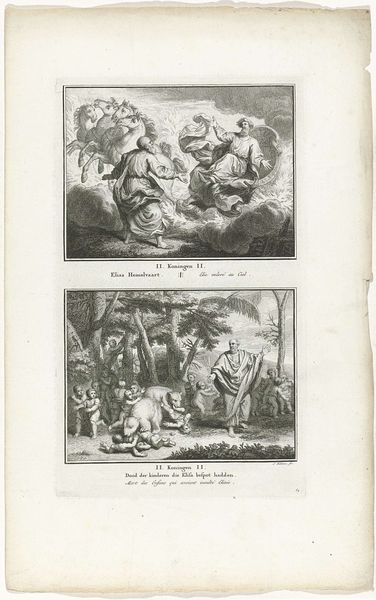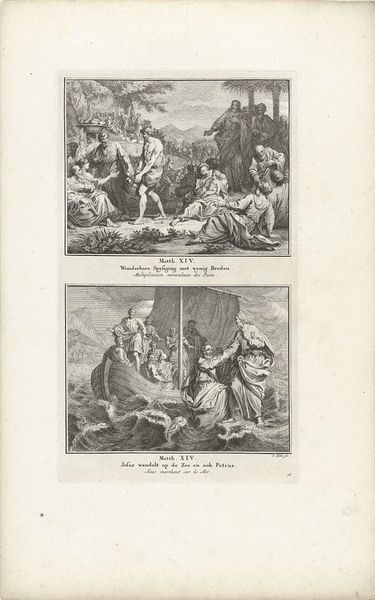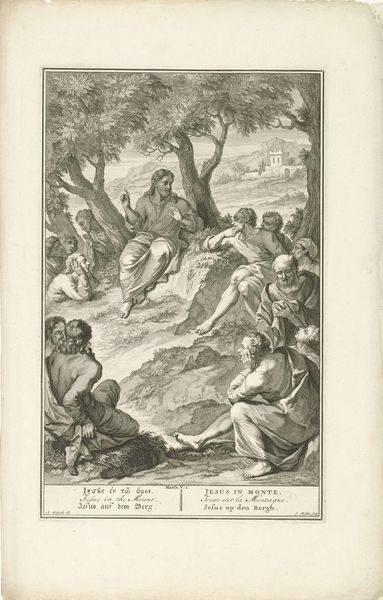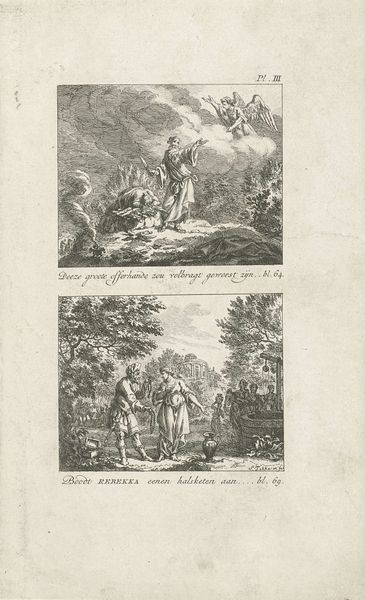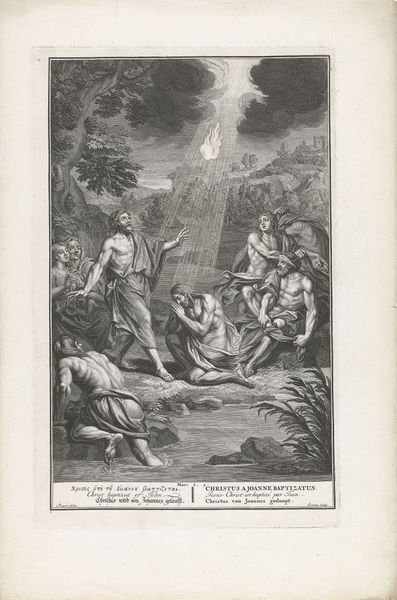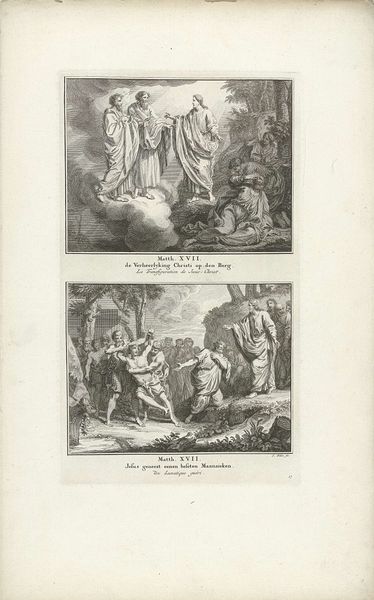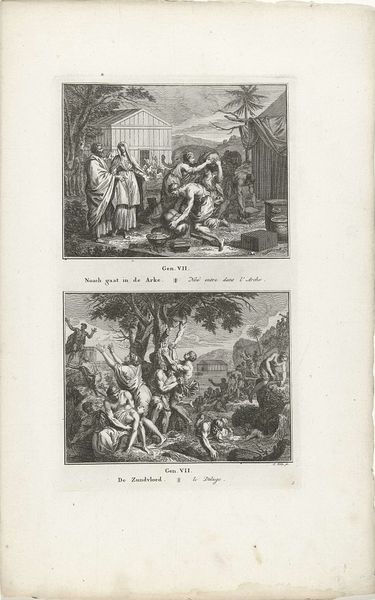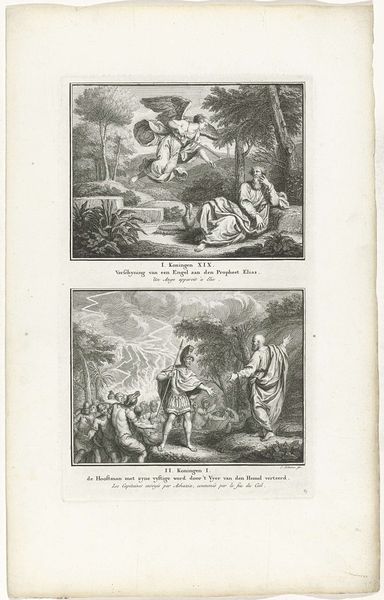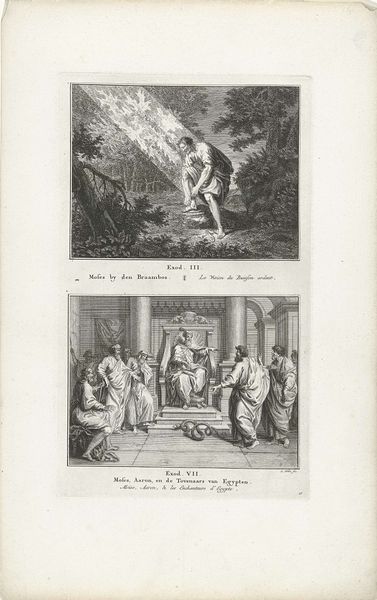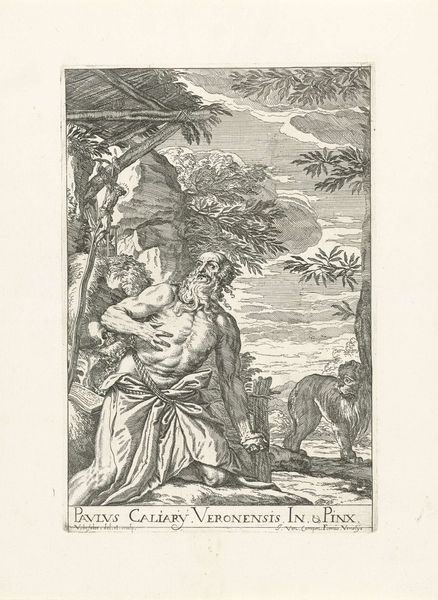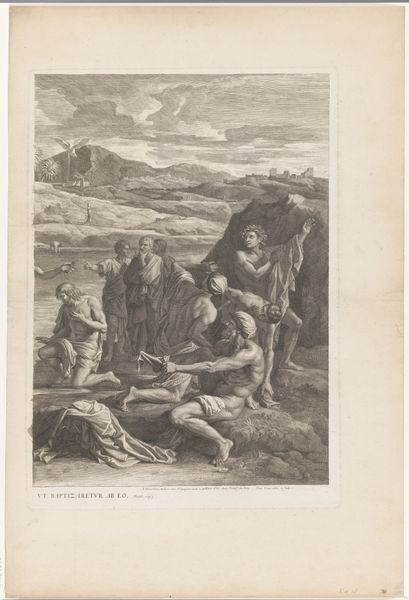
Elia door de raven gevoed en Obadja voedt honderd profeten in een grot 1791
0:00
0:00
jacobfolkema
Rijksmuseum
Dimensions: height 326 mm, width 194 mm
Copyright: Rijks Museum: Open Domain
Editor: This engraving by Jacob Folkema, dating from 1791, depicts two scenes: "Elia door de raven gevoed en Obadja voedt honderd profeten in een grot." The rendering is quite detailed. What strikes me is how different the two stories are compositionally, the top feeling more open and the bottom quite enclosed. How do you interpret this work? Curator: You've noticed the key distinction. Let's consider the raven first. Throughout history, it has symbolized many things: prophecy, intelligence, but also death. Notice how the artist has chosen to depict it here, carrying nourishment. What does that reversal suggest about the role of divine intervention? Editor: So, the artist is using the raven as a visual cue, saying that even a symbol of death can be an instrument of God? Curator: Precisely! And below, the scene in the cave. Think about the cave as a symbol itself: refuge, the womb, a place of hidden knowledge. Obadja's feeding of the prophets is about preservation, of not just life, but of faith. It's intentionally darker, representing that which is hidden. It's quite powerful, how Folkema uses contrasting spaces to convey these complex biblical narratives, don't you think? Editor: Absolutely. Seeing those contrasting symbolic spaces really clarified how much the visual language enhances the storytelling here. I had missed all the nuances at first glance! Curator: Visual symbols build shared understanding. Think of them as cultural bridges, connecting us across centuries, to stories and beliefs that continue to resonate. This engraving is a wonderful reminder of how artists employ these bridges to deliver meaning.
Comments
No comments
Be the first to comment and join the conversation on the ultimate creative platform.
